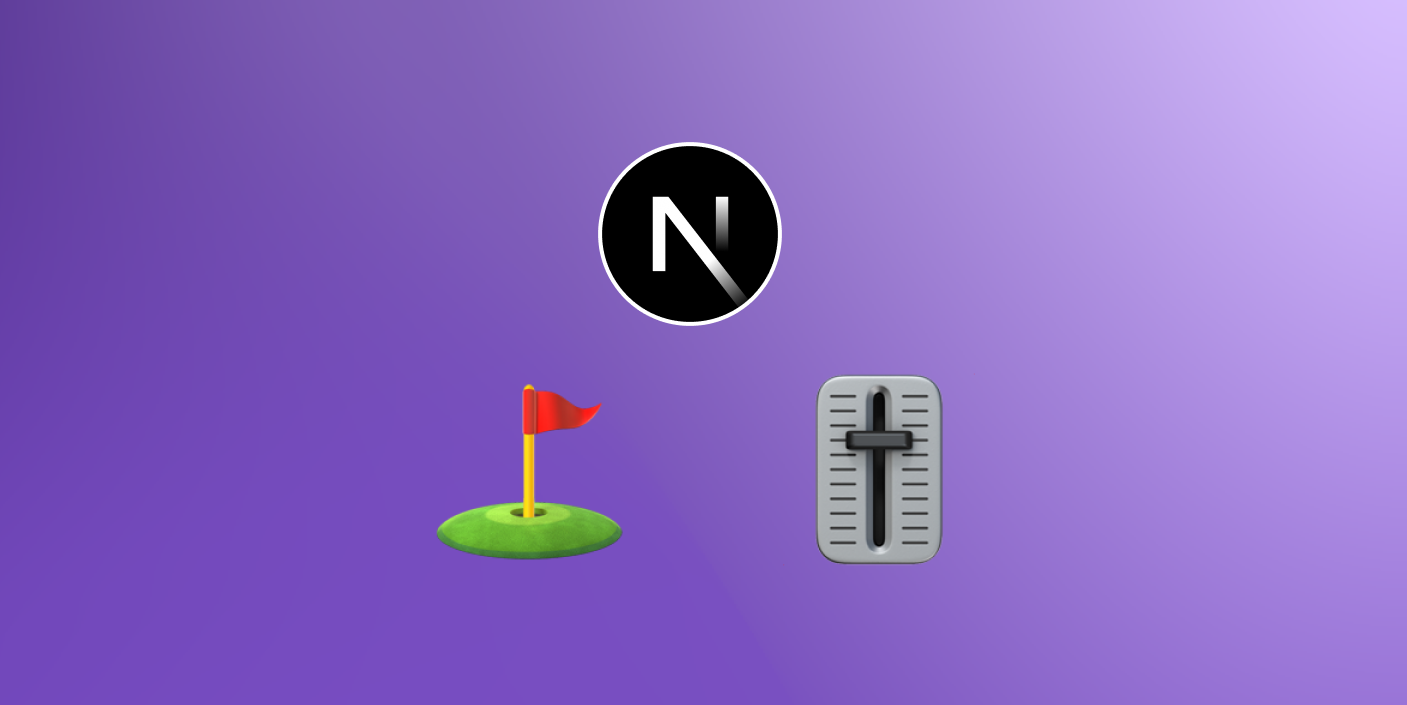Published on April 29, 2023
Feature Flags in Next.js

What are Feature Flags
Feature Flags (or Feature Toggles) are an important tool when it comes to deploying changes and updates to an application. With a Feature Flag, developers can easily toggle on or off different features and updates, allowing for easier testing and deployment of changes. This technique is especially useful for applications that are constantly being updated and changed and has become popular with Trunk Based Development.
Feature Flags are used to selectively enable or disable certain features of an application. This makes it easy to test new features and updates without having to actually deploy them to production. With Feature Flags, developers can easily turn off certain features if they are causing problems or if they are not ready for production yet.
Stages of Feature Flags
Hardcoded
Feature Flags can be used in a variety of different ways, depending on the needs of the application. The most basic way to use a Feature Flag is by just using a boolean variable that is either true or false and hard coded:
_10const featureFlag = true;_10_10function MyButton() {_10 // lets try if an actual button works, too_10 if (featureFlag) {_10 return <button>Click Me</button>;_10 }_10 // TODO: use a real button here_10 return <div role="button">Click Me</div>;_10}
Pros
The pros of using a hardcoded Feature Flag are that it is very simple and easy to implement. They don't require any additional libraries or dependencies and can be used in any application.
Cons
The cons of using a hardcoded Feature Flag are that it is not very flexible. You will need to update the code every time you want to change the value of the Feature Flag and therefore re-deploy the application. This also means that only developers can change the value of the Feature Flag, which can be a problem if you want to give non-developers access to the Feature Flag. This way of implementing Feature Flags will also give you the same results for all environments, which can be a problem if you want to test the Feature Flag in different environments.
Environment Variables
Another way to implement Feature Flags is by using environment variables. This way of implementing Feature Flags is very similar to the hardcoded way, but instead of using a boolean variable, we will use an environment variable:
_10const featureFlag = process.env.FEATURE_FLAG === "true";_10_10function MyButton() {_10 // lets try if an actual button works, too_10 if (featureFlag) {_10 return <button>Click Me</button>;_10 }_10 // TODO: use a real button here_10 return <div role="button">Click Me</div>;_10}
Pros
The pros of using environment variables for Feature Flags are that they are very flexible. You can easily change the value of the Feature Flag without having to re-deploy the application. This way of implementing Feature Flags will also give you different results for different environments, which can be useful if you want to test the Feature Flag in different environments.
Cons
This implementation is a good middleground between the hardcoded way and the full-services way, but it still has some drawbacks. The biggest drawback is that you will need to update the environment variable every time you want to change the value of the Feature Flag. This can be a problem if you want to give non-developers access to the Feature Flag. It can also be a problem if there is no simple way of updating environment variables in your application. This implementation also relies on the environment variables being set correctly, which can lead to errors when having typos in either the name of the variable or the value.
Services
The most flexible way of implementing Feature Flags is by using a Service such as Abby. This way of implementing Feature Flags is very similar to the environment variable way, but instead of using an environment variable, we will use a service:
_12import { useFeatureFlag, getFeatureFlagValue } from "lib/abby";_12_12function MyButton() {_12 const featureFlag = useFeatureFlag("FEATURE_FLAG");_12_12 // lets try if an actual button works, too_12 if (featureFlag) {_12 return <button>Click Me</button>;_12 }_12 // TODO: use a real button here_12 return <div role="button">Click Me</div>;_12}
Pros
The pros of using a service for Feature Flags are that they are very flexible. It gives you the ability to change the value of the Feature Flag without having to re-deploy the application. You can also define different values for different environments, which can be useful if you want to test the Feature Flag in different environments. Toggling is Feature Flag in a Service like Abby is also a breeze, as you can just toggle it on or off in the dashboard which means that non-devs can also easily toggle the Feature Flag.
The biggest benefit of using Abby is the developer experience and tight integration with Next.js. Abby is fully typed and provides a hook to easily use Feature Flags in your application. It also allows include your Feature Flags on the Server whether you are using SSR or SSG.
Cons
The cons of using a service for Feature Flags are that it requires you to use a third-party service. It also means that you will need to pay for the service, which can be a problem if you are on a tight budget. Abby offers a generous free tier, but if you need more than that, you will need to pay for it.
Using Feature Flags with the useFeatureFlag hook from Abby is a great way to quickly and easily deploy changes and updates to a Next.js application.
With this hook, developers can easily toggle on or off different features and updates, allowing for easier testing and deployment of changes.